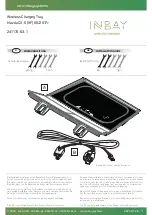
DIESEL ENGINE BREAK-IN RECOMMENDATIONS
The diesel engine does not require a break-in period due to its construction. Normal
operation is allowed, providing the following recommendations are followed:
• Warm up the engine before placing it under load.
• Do not operate the engine at idle for prolonged periods.
• Use the appropriate transmission gear to prevent engine lugging.
• Observe vehicle oil pressure and temperature indicators.
• Check the coolant and oil levels frequently.
• Vary throttle position at highway speeds when carrying or towing significant
weight.
NOTE:
Light duty operation such as light trailer towing or no load operation will extend the
time before the engine is at full efficiency. Reduced fuel economy and power may be
seen at this time.
The engine oil installed in the engine at the factory is a high-quality energy
conserving type lubricant. Oil changes should be consistent with anticipated climate
conditions under which vehicle operations will occur. NON-DETERGENT OR
STRAIGHT MINERAL OILS MUST NEVER BE USED.
DIESEL ENGINE STARTING PROCEDURES
Normal Starting Procedure
The shift lever must be in the NEUTRAL (N) position, and the brake pedal must be
pressed, to allow engine cranking. Place the shift lever in NEUTRAL (N) and apply
the brake pedal BEFORE turning the key to the START/AVV position; otherwise, the
engine will not crank and the key must be cycled OFF, then back on, before cranking
is allowed.
NOTE:
• Normal starting of either a cold or a warm engine is obtained without pumping or
pressing the accelerator pedal.
• Observe the instrument panel cluster lights when starting the engine.
To start the engine follow the procedure below:
1. Press and hold the brake pedal.
2. Place the shift lever into the NEUTRAL (N) position while keeping the brake pedal
depressed.
3. Turn the ignition switch to the ON/RUN/MAR position and watch the instrument
panel cluster lights.
DIESEL
46
















































